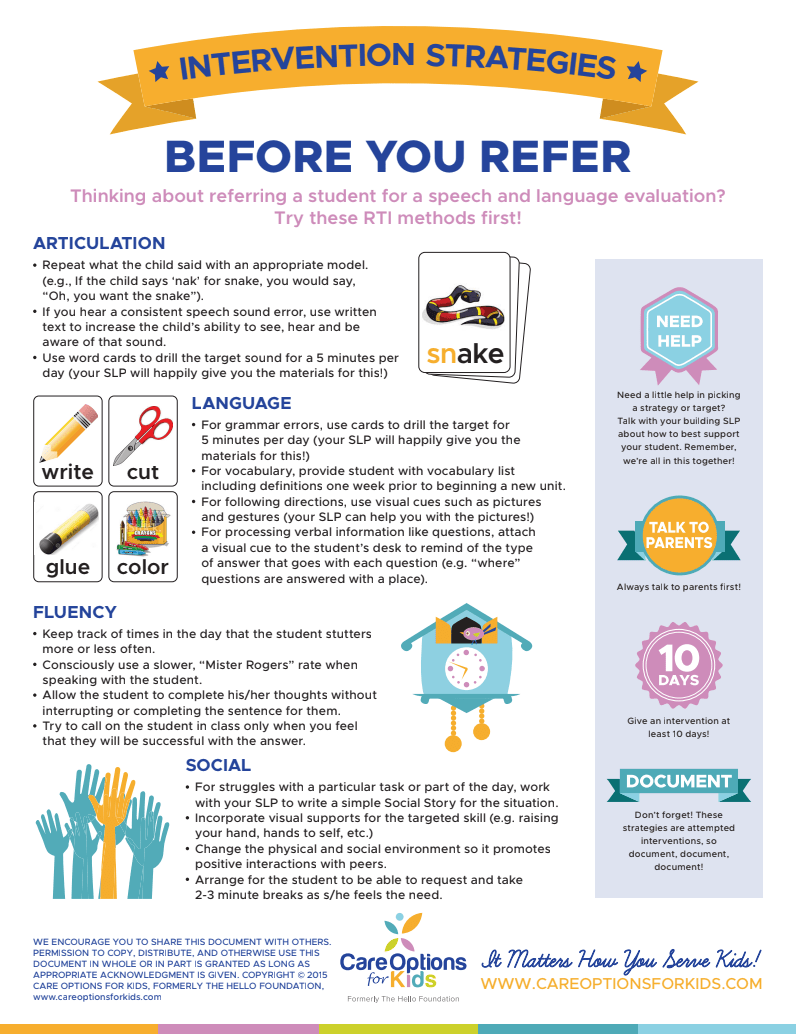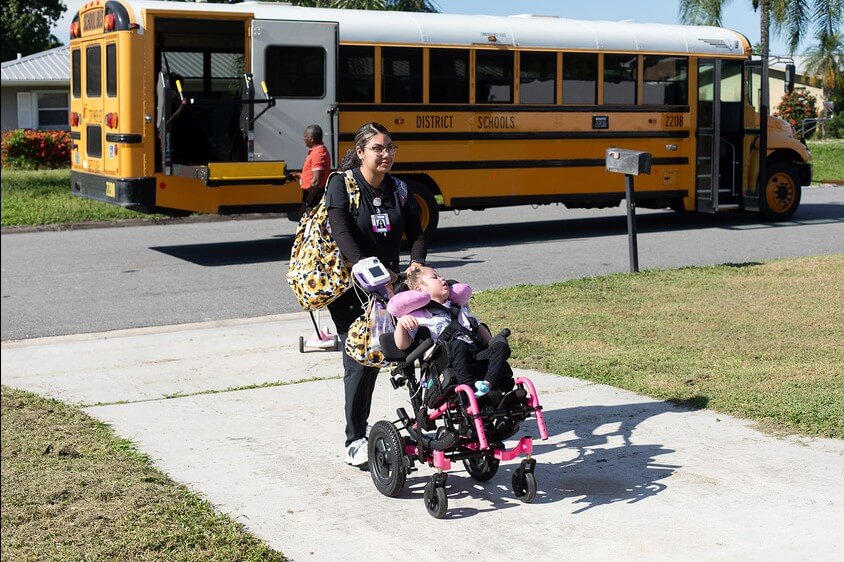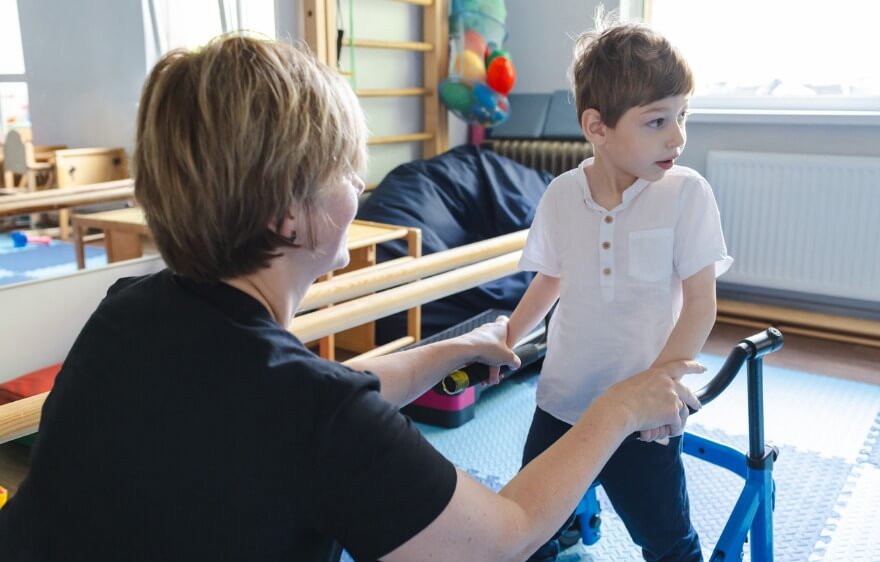Referrals. A blessing and a curse. On one hand, we need them like we need water. We would never know about students who are struggling and could benefit from services without teachers making referrals. Wading through a pile of referrals when we’re severely overloaded, however, can be our kryptonite. One unnecessary referral can result in hours upon hours of wasted time and energy for everyone involved, including the student.
I don’t have all the answers (please point me to someone who does!), but I have had some success in slowing the flow of referrals by trying to plug into existing building RTI models. Yes, I know. The advent of RTI muddied the waters for many of us, and many SLPs and teachers still struggle to find how tiered communication interventions should work. But if you have even one general ed teacher who is willing to work with you on this stuff, it can make a difference in slowing the rising tide that is your workload. The added bonus is that everyone wins — teachers are able to learn more about what a true communication disability looks like, typically developing students are spared from needless testing and missed instructional time, and we’re able to focus on the students who are most in need of our specialized knowledge and skill set.
One way you can start to move towards an RTI model for communication is to work with teachers on doing small interventions before a referral happens. Check out our free download for a few ideas you can share with the next teacher who sends a referral your way. We designed this to be versatile. Try posting it in the copy room as a reminder, or sharing it in a 1-on-1 meeting with a teacher as a jumping-off point for making a plan for a student. However you use it, we hope it helps you feel a little less overwhelmed and a little more in control of your own destiny.
This post was originally published 2/7/2011 and most recently updated 10/10/2023






